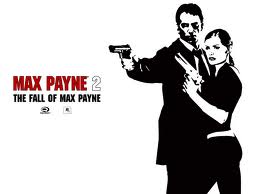42 posts
• Page 2 of 2 • 1, 2
WTB Brink for less than $90 please
-

AnDres MeZa - Posts: 3349
- Joined: Thu Aug 16, 2007 1:39 pm
-

REVLUTIN - Posts: 3498
- Joined: Tue Dec 26, 2006 8:44 pm
Dude: At least webafrica has the freezone thing with the Steam server. I remember having to eat away my 3Gb cap to install a game bought off Steam that I wouldn't be able to play online until the next month unless I bought more expensive (and slow) internet cap. Telskum for the loss!
London internet is so much better. And I'm on a "slow" BT line
I feel your pain (ex Capetonian here).
London internet is so much better. And I'm on a "slow" BT line
I feel your pain (ex Capetonian here).
Wehey! Awesome and thanks, jealous of the BT line. Though we are getting there...slowly.
-

le GraiN - Posts: 3436
- Joined: Thu Mar 22, 2007 6:48 pm
Other economic factors here besides supply and demand, some currencies just have less purchasing power than others even if the exchange rate says they should be better/equal.
Anyway, a famous indicator is the 'Big Mac Index' which looks at the price of Big Macs (a 'basket of goods' that remains relatively stable across nations) in various nations. In some nations X amount of cash will buy you Y Big Macs, its used as a rough indicator of some currencies purchasing power. For example, in China it costs the equivalent of $2.03 to buy a Big Mac (using current exchange rates and 2010 prices) while it costs $3.73 in the US. This indicates that the Yuan (Chinese money) is far undervalued (which is a current global economic concern). Meanwhile it costs $7.41 to buy a Big Mac in Switzerland, indicating that the Swiss franc is extremely overvalued in terms of its purchasing power.
Anyway, here's a chart:
http://www.oanda.com/currency/big-mac-index
It looks like Aussie and Kiwi money is a bit overvalued but using just that should something cost ~50% more in Australia? No. 10%, sure, but a 30 dollar increase on a 60 dollar item? Something else is going on.
Anyone know the cost to import to Australia? Maybe there's a tariff or something.
Ah! According to this:
http://www.dfat.gov.au/trade/negotiations/schedule/schedule.html
There's a 15% tariff on video games (write your representatives about that one I guess)
But still, not enough...
I can figure out why you pay more than others, but I can't figure out why you pay so much more than others.
Anyway, a famous indicator is the 'Big Mac Index' which looks at the price of Big Macs (a 'basket of goods' that remains relatively stable across nations) in various nations. In some nations X amount of cash will buy you Y Big Macs, its used as a rough indicator of some currencies purchasing power. For example, in China it costs the equivalent of $2.03 to buy a Big Mac (using current exchange rates and 2010 prices) while it costs $3.73 in the US. This indicates that the Yuan (Chinese money) is far undervalued (which is a current global economic concern). Meanwhile it costs $7.41 to buy a Big Mac in Switzerland, indicating that the Swiss franc is extremely overvalued in terms of its purchasing power.
Anyway, here's a chart:
http://www.oanda.com/currency/big-mac-index
It looks like Aussie and Kiwi money is a bit overvalued but using just that should something cost ~50% more in Australia? No. 10%, sure, but a 30 dollar increase on a 60 dollar item? Something else is going on.
Anyone know the cost to import to Australia? Maybe there's a tariff or something.
Ah! According to this:
http://www.dfat.gov.au/trade/negotiations/schedule/schedule.html
There's a 15% tariff on video games (write your representatives about that one I guess)
But still, not enough...
I can figure out why you pay more than others, but I can't figure out why you pay so much more than others.
-

Rebekah Rebekah Nicole - Posts: 3477
- Joined: Fri Oct 13, 2006 8:47 pm
@chainlynx - add to your post the shipping costs themselves to Australia, then for NZ, the exchange rate and the shipping cost from Australia to us (because they ALWAYS come via Australia instead of direct).
Should add up with everything else to cover the cost of hardcopy games. Not much reason for the digital copies to do the same though.
Should add up with everything else to cover the cost of hardcopy games. Not much reason for the digital copies to do the same though.
-

James Baldwin - Posts: 3366
- Joined: Tue Jun 05, 2007 11:11 am
In sweden its around 110 USD and yeah, that is expencive.
110 USD?
I got it for 78 USD (499 sp?n, webhallen.. finns dock f?r 429 nu)
-

lisa nuttall - Posts: 3277
- Joined: Tue Jun 20, 2006 1:33 pm
I'm going to move this to Community Discussion since it's a general discussion of game price variances around the world.
I do recall an Australian friend stocking up when he visited the UK, saying it was a fraction of the prices back home. I know that when Fallout 3 came out, I had a merchandising swap with a member of these forums - I bought the Game Limited Edition copy and shipped it out to him (with the little Brotherhood of Steel statuette), and he got me some US-only exclusive merchandise in return.
I do recall an Australian friend stocking up when he visited the UK, saying it was a fraction of the prices back home. I know that when Fallout 3 came out, I had a merchandising swap with a member of these forums - I bought the Game Limited Edition copy and shipped it out to him (with the little Brotherhood of Steel statuette), and he got me some US-only exclusive merchandise in return.
-

Lily - Posts: 3357
- Joined: Mon Aug 28, 2006 10:32 am
I wonder if
Walmart AU Brink mark up = Walmart US Brink mark up
Walmart AU Brink mark up = Walmart US Brink mark up
-

Bedford White - Posts: 3307
- Joined: Tue Jun 12, 2007 2:09 am
110 USD?
I got it for 78 USD (499 sp?n, webhallen.. finns dock f?r 429 nu)
I got it for 78 USD (499 sp?n, webhallen.. finns dock f?r 429 nu)
According to that purchasing power chart link I put up, 110 USD actually sounds about right. 78 USD is a damn bargain.
-

James Rhead - Posts: 3474
- Joined: Sat Jul 14, 2007 7:32 am
I think they are just charging by currency conversion. US dollar is kinda weak now in most regions, so you pay more?
-

Alada Vaginah - Posts: 3368
- Joined: Sun Jun 25, 2006 8:31 pm
We don't have Walmart in Australia. (Thankfully by the sounds)
If it was purely currency conversion we'd be far better off. The AUD and USD are currently roughly equal, the AUD being slightly stronger. Over a decade ago when most of these prices were dreamed up the AUD was worth barely over a half of the USD. As the USD declined and the AUD grew in comparison we saw benefits in most other areas except software. Software we have been repeatedly screwed by publishers. Windows has been double the price here for ages and only recently started a slight decline to a more reasonable price. For the seemingly pure purposes of greed game software prices has risen with inflation and soaked up the profits.
That tariff should only apply to console games. Plus I'm guessing there is a loophole with all digitally distributed games. (Which is stupid anyway - the tariff is ancient and should be canned.) This is generally reflected with PC games being $10-$20 cheaper than the console counterparts. Hence my original disgust at Steam's pricing of a digitally distributed PC game at a console price. If it was $69 it might have been a bit easier to swallow but that's not the case. Really the $49-$59 is the most appropriate for PC digital distribution.
In other news the CD key I got from the UK won't work in Australia. So I just got screwed. Looks like I'll never see Brink. I strongly recommend every other Aussie to never pay ridiculous prices for games. It's daylight robbery.
If it was purely currency conversion we'd be far better off. The AUD and USD are currently roughly equal, the AUD being slightly stronger. Over a decade ago when most of these prices were dreamed up the AUD was worth barely over a half of the USD. As the USD declined and the AUD grew in comparison we saw benefits in most other areas except software. Software we have been repeatedly screwed by publishers. Windows has been double the price here for ages and only recently started a slight decline to a more reasonable price. For the seemingly pure purposes of greed game software prices has risen with inflation and soaked up the profits.
That tariff should only apply to console games. Plus I'm guessing there is a loophole with all digitally distributed games. (Which is stupid anyway - the tariff is ancient and should be canned.) This is generally reflected with PC games being $10-$20 cheaper than the console counterparts. Hence my original disgust at Steam's pricing of a digitally distributed PC game at a console price. If it was $69 it might have been a bit easier to swallow but that's not the case. Really the $49-$59 is the most appropriate for PC digital distribution.
In other news the CD key I got from the UK won't work in Australia. So I just got screwed. Looks like I'll never see Brink. I strongly recommend every other Aussie to never pay ridiculous prices for games. It's daylight robbery.
-

LuCY sCoTT - Posts: 3410
- Joined: Sun Feb 04, 2007 8:29 am
Uhmm, what happens when I buy a game on steam -paying the relatively cheaper Euro pricing..
..and 'gift' it to someone in Australia?
Do they pay extra to receive the gift?
If not.. PM me, and we'll talk internet economics
..and 'gift' it to someone in Australia?
Do they pay extra to receive the gift?
If not.. PM me, and we'll talk internet economics
-

Kitana Lucas - Posts: 3421
- Joined: Sat Aug 12, 2006 1:24 pm
I did a bit of research last night into the Tariff issue and from what I can tell that Tariff isn't in effect any more. Other free trade agreements have since over-ridden it. The price gap between PC and Console titles must just be the MS and Sony licensing costs.
@andy From the bit of looking around I did this morning it looks like you may be right...
@andy From the bit of looking around I did this morning it looks like you may be right...
-

josh evans - Posts: 3471
- Joined: Mon Jun 04, 2007 1:37 am
Really cheap in the UK, on amazon (PS3 and Xbox) it was £33.
What's that old football song, to the tune of The Whole World in His Hand?
"We get three dollars, to the pound!" :laugh:
Uhmm, what happens when I buy a game on steam -paying the relatively cheaper Euro pricing..
..and 'gift' it to someone in Australia?
Do they pay extra to receive the gift?
If not.. PM me, and we'll talk internet economics
..and 'gift' it to someone in Australia?
Do they pay extra to receive the gift?
If not.. PM me, and we'll talk internet economics
I'll undercut your crappy euro.
Also, We can get you Americans alcohol much cheaper than what it'll cost you normally! You just need to be willing to pilot a dinghy under cover of darkness to Calais and back!
-

Judy Lynch - Posts: 3504
- Joined: Fri Oct 20, 2006 8:31 am
It's $108 in NZ.
EDIT: And that's the BEST price I've found for it...
EDIT: And that's the BEST price I've found for it...
It's $49.99 on Steam, so ~$60NZ.
-

James Rhead - Posts: 3474
- Joined: Sat Jul 14, 2007 7:32 am
Heh. Lucky for now Turns-the-page. Screwed when the world catches up.
The funny thing is (sort of) price fixing and similar shady practices is illegal here in Australia and I'd guess most Western countries except maybe the US where they seem to take pride at being able to screw each other over. The fact it happens at an international level just goes to show the same a-hats are still out there. As globalisation slowly comes to realisation I hope these flaws are ironed out.
I contacted the Australian consumer watchdog agency to ask about it but I'm not holding my breath. It would be nice to see our Government grow some balls for once and make a stand on a-hattery. Sigh. This has been such a depressing few days for me and I have a bitter taste in my mouth when I think of Bethesda. Which is quite sad considering how much I respected them previously.
I've also contacted the Australian Department of Foreign Affairs and Trade to confirm my research and assumptions on the Tariff issue.
The funny thing is (sort of) price fixing and similar shady practices is illegal here in Australia and I'd guess most Western countries except maybe the US where they seem to take pride at being able to screw each other over. The fact it happens at an international level just goes to show the same a-hats are still out there. As globalisation slowly comes to realisation I hope these flaws are ironed out.
I contacted the Australian consumer watchdog agency to ask about it but I'm not holding my breath. It would be nice to see our Government grow some balls for once and make a stand on a-hattery. Sigh. This has been such a depressing few days for me and I have a bitter taste in my mouth when I think of Bethesda. Which is quite sad considering how much I respected them previously.
I've also contacted the Australian Department of Foreign Affairs and Trade to confirm my research and assumptions on the Tariff issue.
-

courtnay - Posts: 3412
- Joined: Sun Nov 05, 2006 8:49 pm
It's $49.99 on Steam, so ~$60NZ.
I just checked the NZ store and you're right!
BRINK
NZ = $49.99
AUS = $89.99
WTF!?
This is BS!
Ed:
BTW to see other Steam stores for different regions you just need to change some code in the url. NZ:
http://store.steampowered.com/?cc=nz
US:
http://store.steampowered.com/?cc=us
Australia:
http://store.steampowered.com/?cc=au
Updated Aus price, is 89 not 79!
-

Eibe Novy - Posts: 3510
- Joined: Fri Apr 27, 2007 1:32 am
42 posts
• Page 2 of 2 • 1, 2
